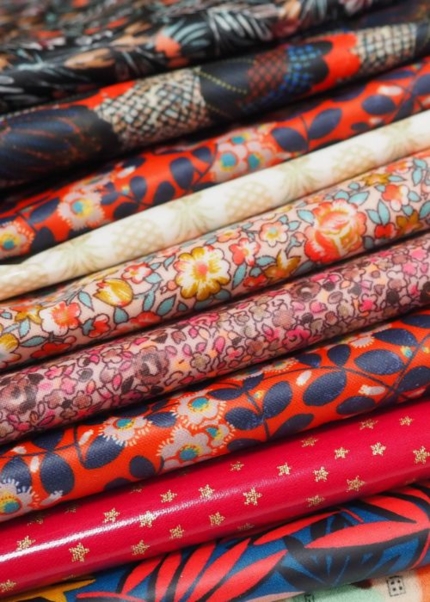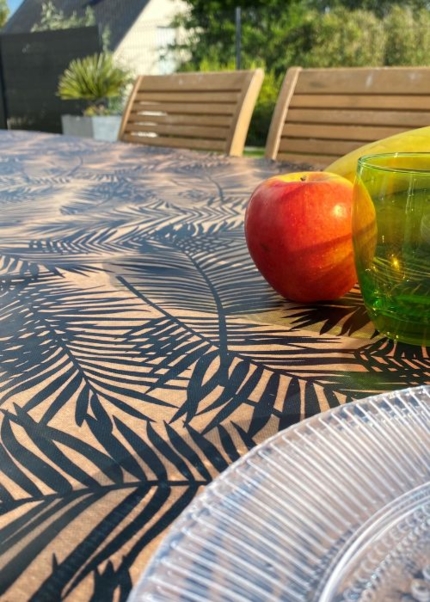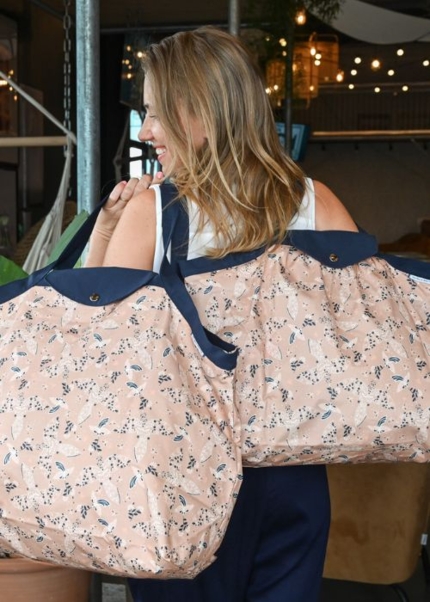Coating
So how does coating work? Our long-established coating process works like this: the fabric passes through a machine that spreads the coating paste, heats it and then cools it. Depending on how the fabric is to be used, it needs to become more or less waterproof, more or less resistant: the fabric is coated in one or more layers. Different aspects can be obtained: matte, glossy or even a relief on the applied layer.
For our coated fabric at PPMC, we use a cotton fabric base, and the coating is made with phthalate-free PVC for the health of all, especially children.
PVC coating is different from acrylic coating: it's stronger and more "waterproof". Sometimes the coating appears as a plastic sheet "glued" to the fabric.
Plant-based coating
This new coating, with its composition based on a product derived from agriculture (vegetable oil), is a response to our desire to source production from renewable and responsible materials, by eliminating more than 50% of petroleum-based products from PVC and replacing them with agro-sourced products. Agro plasticization replaces part of the PVC with vegetable plasticizer (oil), but the PVC remains (approx. 25%).
What's the difference between external and internal coating?
As you may have noticed, some PPMC fabrics are coated on the outside and others on the inside. In fact, some of our fabrics are coated on the outside, giving them a smooth, waterproof appearance. On the other hand, some fabrics (with a sequined look, for example) are coated on the inside: they are stiffened, but this keeps the look of the fabric on the outside. But they are not waterproof. What are the advantages of coated fabric? - Coated fabric is waterproof and easy to maintain. - What's more, it can be used for a wide range of sewing and furnishing projects. - Coated fabric products are stronger and more durable, and won't wrinkle! What are the disadvantages of coated fabric? - Coated PVC or acrylic fabric is sensitive to heat, and is sometimes a little stiff.


